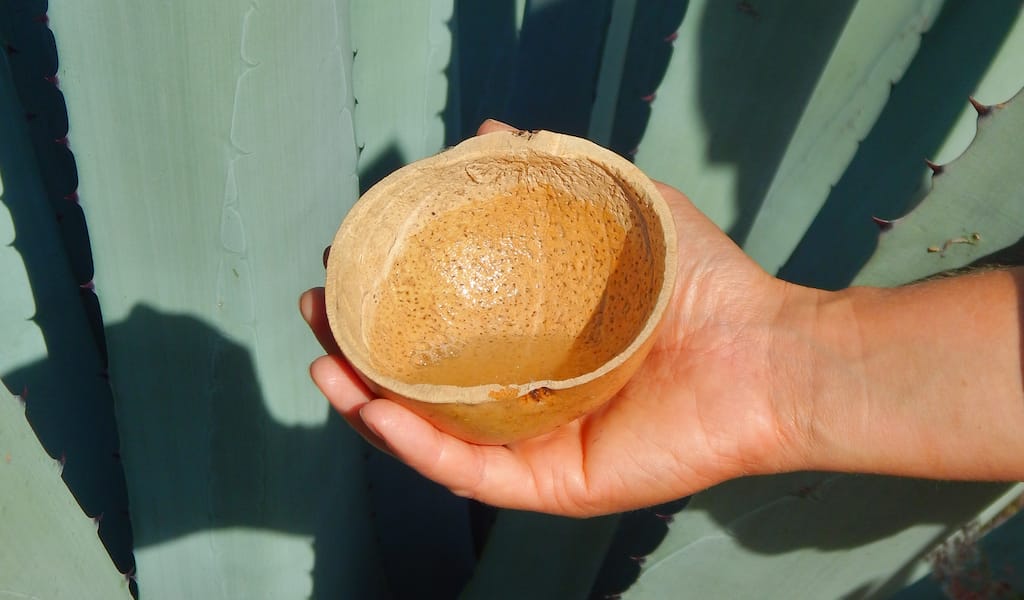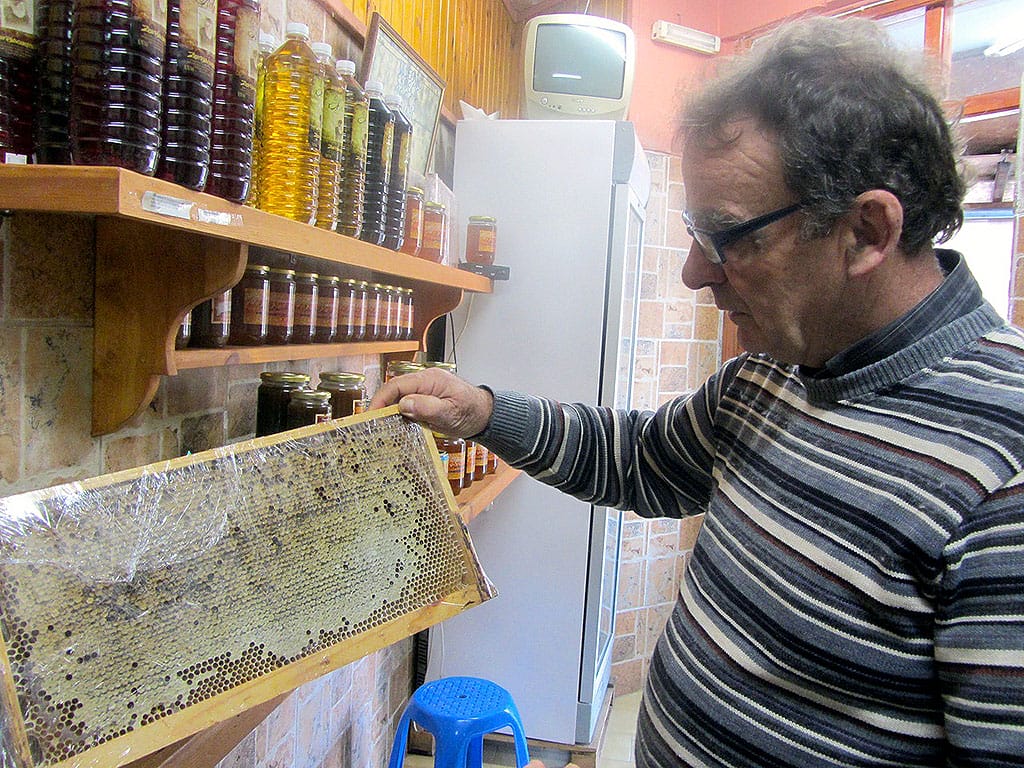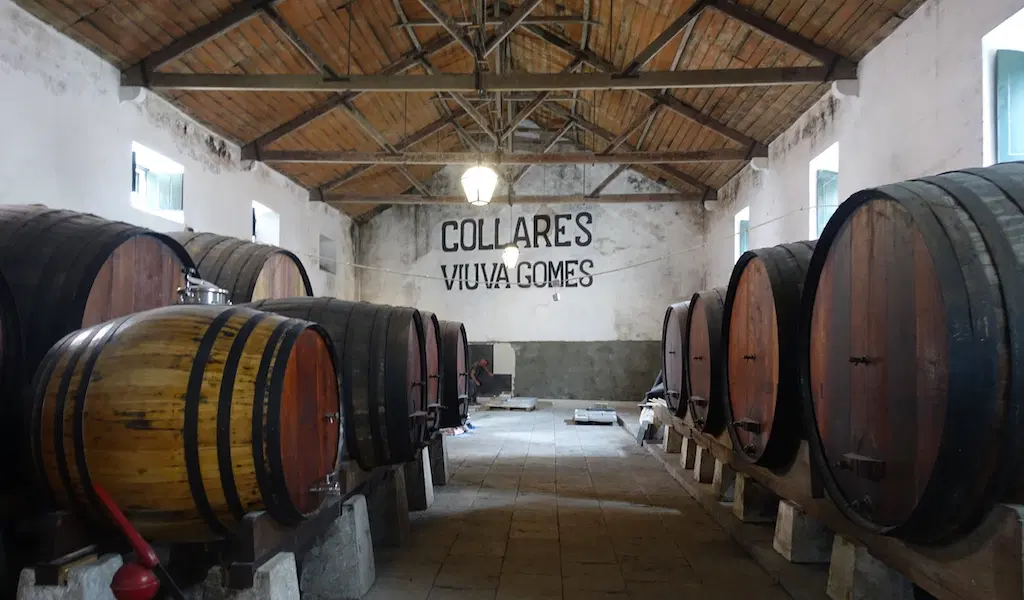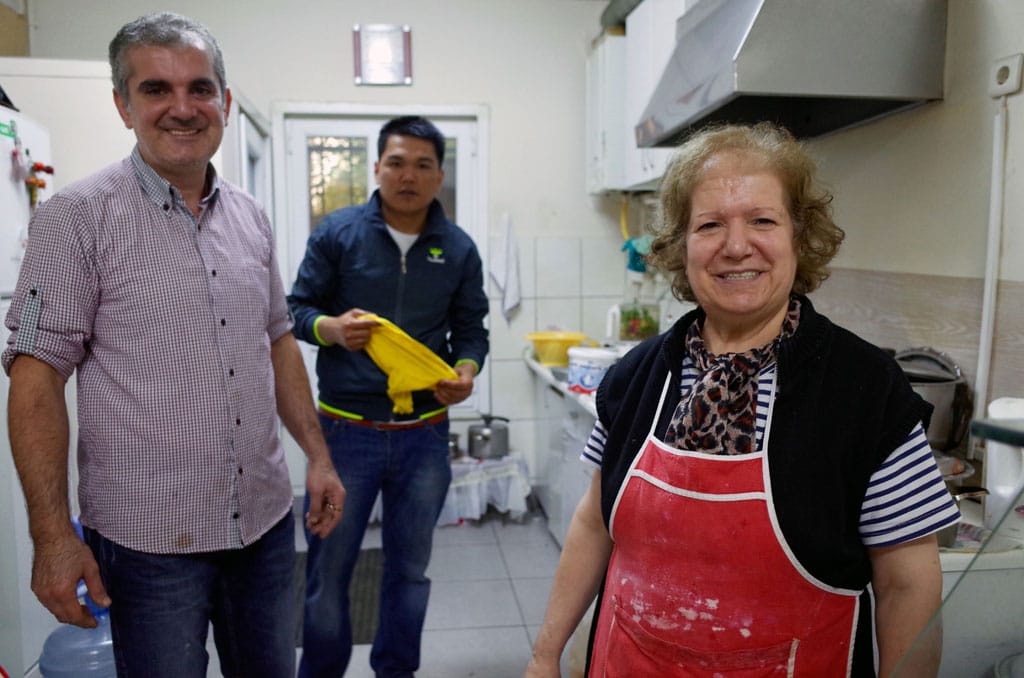Driving east from Oaxaca City, Mexico, into Santiago Matatlán – the town of about ten thousand souls that’s known as the “World Capital of Mezcal” – one’s vista is suddenly dominated by the color green. Across the landscape of gently rolling hills, enormous patchworks of planted agave fields supply the eye with an entire spectrum of verdure, from sage to emerald to jade.
The large, spiky magueys, as they’re also called, are everywhere you look, their dusty shades contrasting with the brighter green of the grasses and cacti also dotting the region’s slopes. But we’re not here for mezcal. Instead, different agave beverages are on the menu today: fresh aguamiel and lightly fermented pulque, harvested daily on this land by fifth-generation owner Reina Luisa Cortés Cortés of A&V La Casa del Pulque.
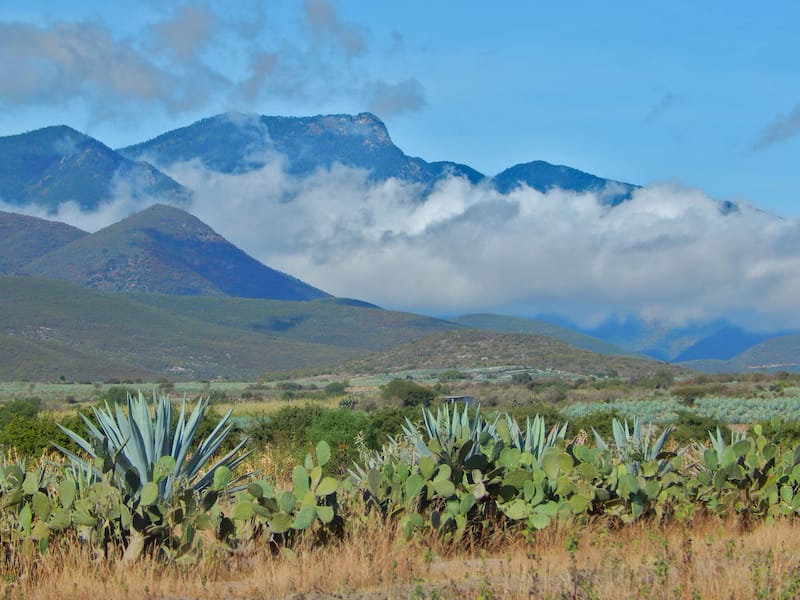
These impressive views of Matatlán – where each year, more and more agave plants take root as mezcal producers cash in on the international demand for the distilled liquor – would be at right home on a postcard. But the picture-perfect vistas obscure a darker reality: these hills were once dominated by forests that helped regulate the local climate, ensuring adequate humidity. Having been clear-cut over the past decade to make room for lucrative mezcal magueys, the lack of diverse vegetation and dominance of agave monoculture has contributed to historic droughts now faced annually across Oaxaca’s Valles Centrales, according to biologist Larson Guerra and a chorus of other scientists (via Mongabay).
Additionally, in order to streamline operations, nearly all of Matatlán’s large mezcal producers douse their fields with the herbicide glyphosate, poisoning the soil and compounding an ecological crisis in the area that’s led to the loss of native flora such as tiny, sweet tomates silvestres (wild tomatoes) and fauna as diverse as rabbits, bees, and the beloved gusano de maguey, the bright-pink “worm” (technically a caterpillar) that’s typically toasted, ground, and mixed with salt to be sprinkled across a slice of orange or jicama and enjoyed alongside a shot of mezcal.
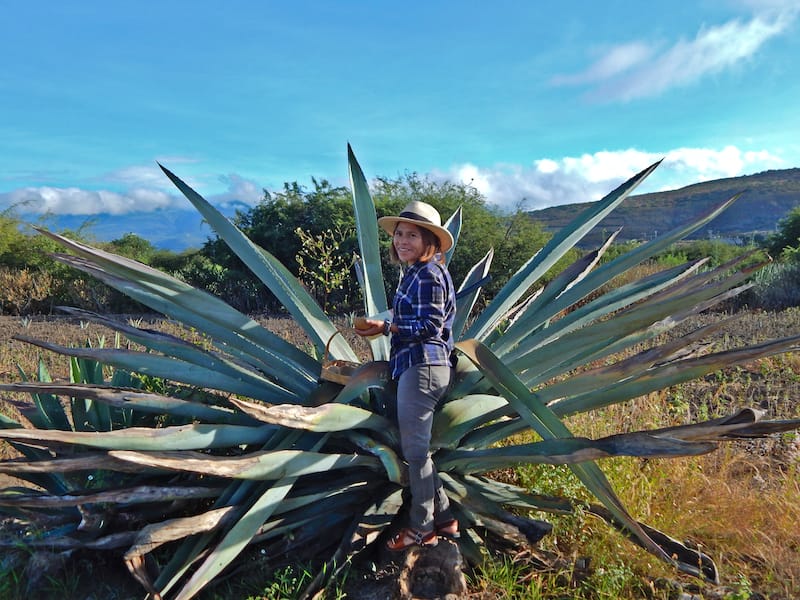
As Reina succinctly encapsulates the problem, “That’s what’s so sad. Those planting agave monocultures aren’t thinking about what their grandchildren are going to eat.”
Reina, 40, shares this lament as we stride across her family’s modest agave plantation – this one, in contrast to most in the area, cultivated without the use of any agrochemicals. As if on cue – right as Reina is explaining how neighboring plantations are all but devoid of everyday life – she spots an agave worm inching across the soil, and drops into a squat to take a look at it. “You just don’t see these on the commercial agave fields.”
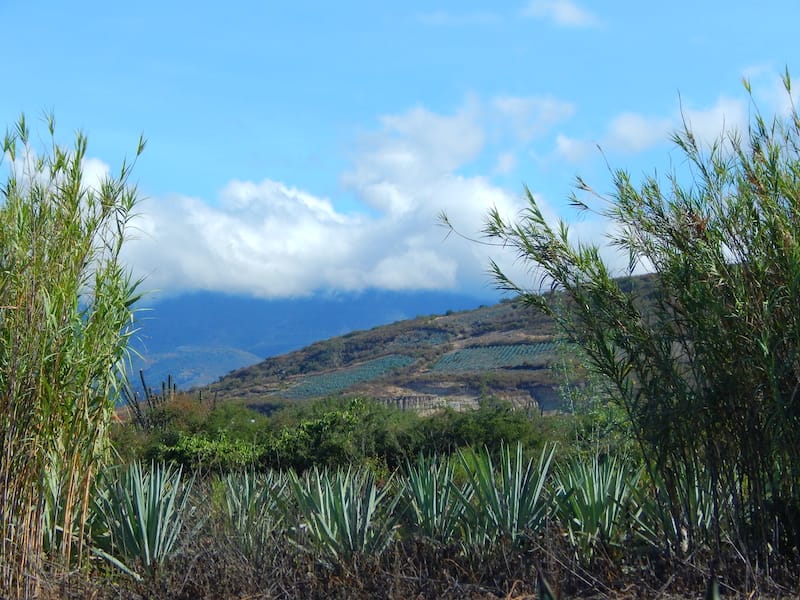
Here on the Cortés’s land, unlike on nearby properties, mezcal is not the end goal. Instead, Reina dedicates her days to the careful, loving harvest of the sweet elixir known as aguamiel – literally, “honey water” – which, when briefly fermented, turns into the cloudy, probiotic-rich beverage known as pulque.
Mezcal is produced by allowing an agave to reach full maturation, a process which takes upwards of 20 years. The plant is then harvested and cut down to the natural sugars-rich core known as the piña, which is roasted in a stone-lined pit and mashed to extract the sweet, smoky juices. Post-fermentation, those juices are distilled to obtain the fiery liquid which has become so popular.
Aguamiel – a thin, clear, sweet sap exuded by the agave plant and enjoyed as-is and in the form of pulque – is also harvested from a fully mature agave plant. In contrast to the mezcal process, the plant remains alive and active over the course of one season (between three to five months) as the sweet liquid is collected every day, according to Reina. She explains that when the season is over, the plant comes to the end of its lifespan and will die. As she shows us when she receives us on her family land on a recent early morning, aguamiel is harvested by cutting out the thin, spiky center leaves of a mature agave – in this case, an Americana species that’s about 25 years old – and leaving a small well where the leaves have been removed. Then, using a scoop-like tool called a castrador, the exposed layer of the well is scraped away, encouraging the plant to leach its delightful sap.
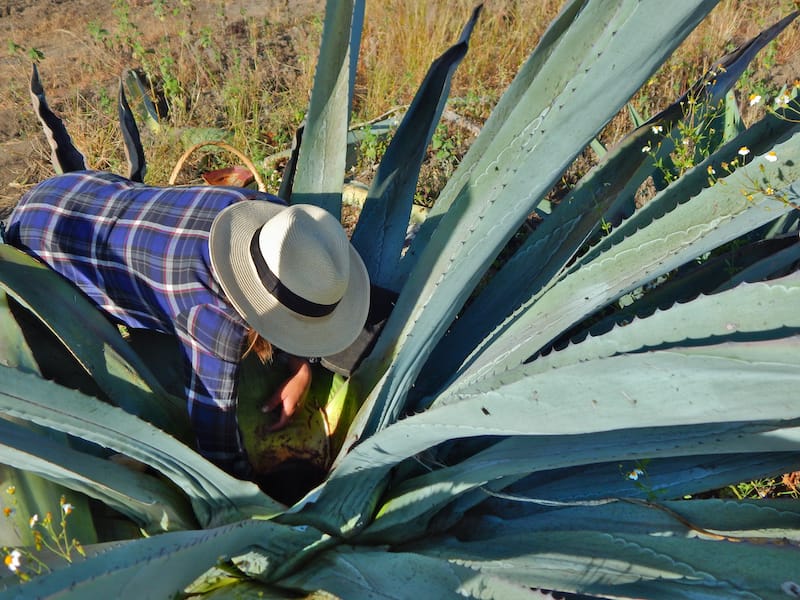
Over the next few hours, that well will fill with sweet aguamiel, ready to be extracted and – if you’re lucky – enjoyed al fresco, right there among the agaves. Demonstrating the process, Reina whips out a specialized tool called an acocote, a long, dried, hollowed-out gourd that has a small hole drilled into each end. To extract the aguamiel, Reina dips the wider end of the gourd just below the surface of the accumulated liquid – then sucks forcefully at the other end of the acocote, drawing the aguamiel into the vessel. Deftly closing the other end of the gourd with her finger, Reina climbs down from the large agave and releases her finger over a waiting jícara – a drinking cup also made from a dried gourd.
Bubbles form on the surface of the freshly-poured aguamiel, tempting us to take a sip. The liquid’s sweetness is balanced by a faintly vegetal flavor that reminds us of how recently the sap was inside the agave: absolutely delicious, and a bit addictive. Since we’re ready for more aguamiel, Reina hands us a tool to extract more ourselves: this time, we use modernity’s version of the acocote, a plastic Coke bottle fitted with some tubing that serves the same purpose as its antique predecessor. “My grandfather called this an aco-Coke,” Cortés tells us, laughing.
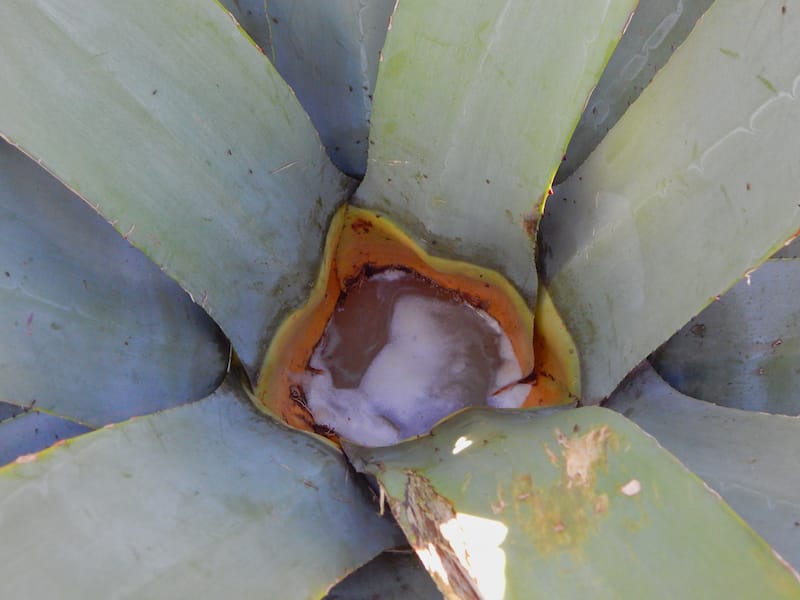
That grandfather was Abraham Cortés Garcia, who died late last year at the age of 97. The fourth generation to work his family’s land – making Reina the fifth – Abraham was a campesino, or farmer, sowing a milpa of corn, beans, and squash to feed his family, consisting of wife Victoria Hernández and their six children. Abraham also took a particular interest in agaves pulqueros, or pulque-producing agaves, and planted a number of them that joined the older agaves sown by former generations of the family. Harvesting the small amount of aguamiel produced by the mature agaves on the property – a plant typically produces only two liters a day, one harvested in the morning and one in the afternoon – Abraham and wife Victoria began to brew up pulque, the pre-Hispanic refresher that’s made by allowing fresh aguamiel to ferment at room temperature using wild yeasts for about 24 hours in warmer temperatures, and about 48 hours at cooler times of the year.
“Back then, everyone in town made pulque,” Reina explains as, back from the fields, we sit down to a hearty homemade breakfast prepared by her mother, María Cortés Sernas. “Each family had their own agaves, and they produced the beverage for their own consumption, sometimes selling whatever they had leftover.” That’s the route Abraham and Victoria chose to take, fitting out the front room of their modest house in town as a small pulquería where villagers could stop by after a long day at work in the fields and enjoy a cool, bubbly drink.
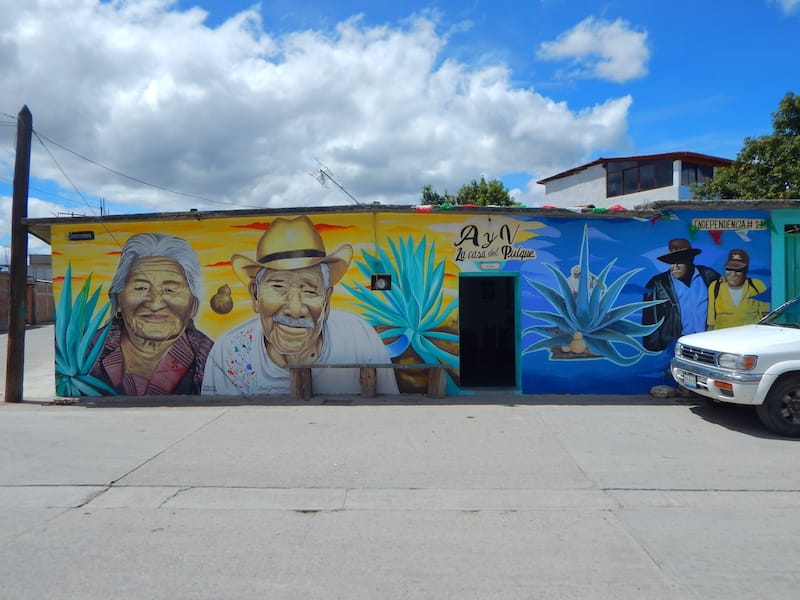
In contrast to the goopy, artificially dyed and sweetened pulque that’s sometimes passed off as the real thing in other parts of Mexico, pulque here in Matatlán and surrounding towns has no additional ingredients. Slightly thicker than aguamiel, with a pleasingly cloudy appearance, the drink is a bit less sweet than its fresh precursor, with a mild fermented undertone. The drink happens to be one that’s best consumed right where it’s harvested—in this case here in Matatlán with Reina—because of how quickly it ferments. After about two days of fermentation, pulque can start to develop overly strong alcoholic notes, so it’s ideal to enjoy the drink within that window.
As we munch the thick, griddled corn tortillas known as memelas, Reina recounts how she got involved in the family business. Of Abraham and Victoria’s 16 surviving grandchildren, Reina was the only one interested in “country life” and continuing the pulque tradition. Six years ago, while living in Mexico City and working as a preschool teacher, she decided to heed her family’s call to return to her native lands and help out her grandparents in their old age. Reina started accompanying her still-sprightly grandfather on his daily rounds tending to the land, and learned everything he could possibly impart to her about harvesting aguamiel and fermenting pulque.
“So here I am, trying to save the tradition,” she says.
In addition to the more straightforward processes of cutting and scraping the indicated agave plants, Reina relates, Abraham passed down some earthy pearls of wisdom, too. One of his techniques? Talking with the agaves as he went about his work. “You have to speak with the plants,” Abraham would tell Reina. “And I do!” she says, chuckling a little. “I’ll say things to them like, ‘Imagine if my grandfather were here, what would he say if you don’t give me any aguamiel!’”
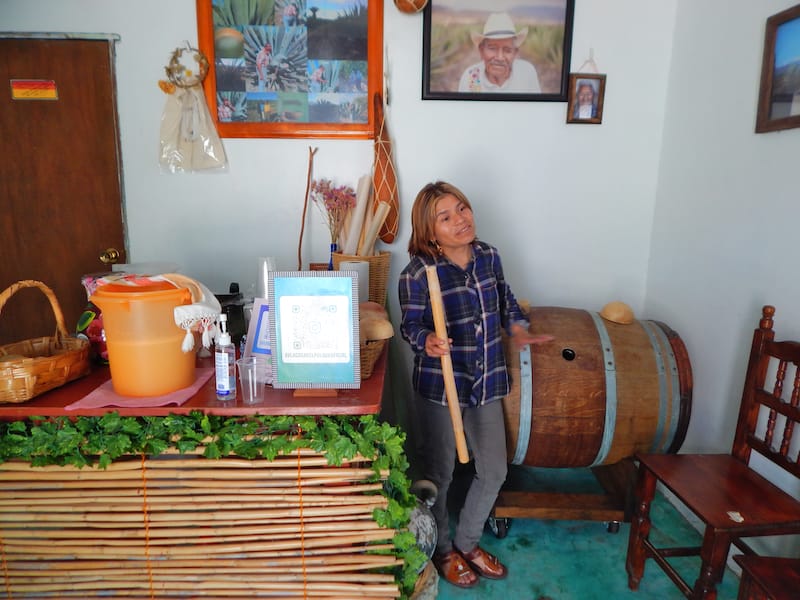
A tiny, spirited powerhouse of a woman, Reina tells us that harvesting aguamiel – like most work on the farm – is typically a man’s job. Although her grandfather was mostly delighted by Reina’s interest in the agaves, he once admitted to her that he was disappointed that it was she, and not any of the grandsons, who wanted to continue his work. “I’m a woman and I can do everything that you can,” was Reina’s answer – and the topic never came up again.
Today, Reina carries forth the Cortés legacy by taking small groups into the fields to harvest aguamiel in the traditional way. Visits will usually proceed to the town center, where her grandparents’ house – where Victoria still lives – still serves as an informal pulquería. As we arrive there in Reina’s car, she explains that while the sign above the store used to read “pulquería,” Reina – who had lived in Mexico City and associated the term with loud, crowded places full of drunks – took down the last three letters, leaving just “pulque.” Today, the small, bright storefront is known as “A&V La Casa del Pulque,” in honor of Abraham and Victoria.
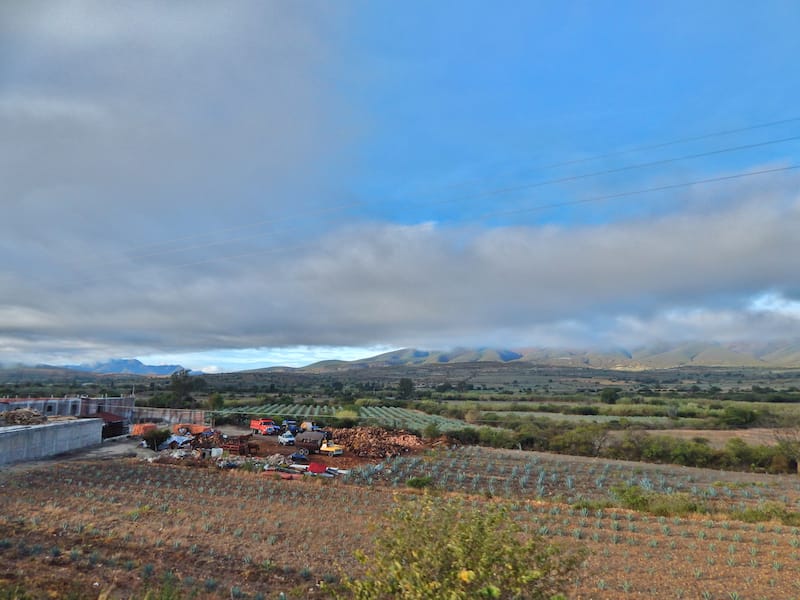
Reina, who was extremely close with her grandfather, tears up as she speaks of his passing last November – but attributes his advanced age to the healthy lifestyle country folk traditionally followed, eating right out of their own fields, and, of course, drinking pulque every day. “I can understand why my grandparents lived so long,” she comments. “There basically wasn’t any sickness in their generation.”
Sadly, that’s a way of life that’s fading here in Matatlán, where the mezcal industry is bringing in cash – but poisoning the land. “With this mezcal boom,” Reina says, surveying the agave-dotted hills around us, “people see an opportunity. You can make a lot of money in mezcal, in fewer years and with less work. But at what cost to the environment?”
In contrast, with pulque-producing agaves, Reina notes, “There’s basically no process – all you have to do is wait for the agave to mature.” And the beverage’s probiotic, health-supporting properties bring wealth in their own way, she adds. “We don’t spend money on doctors. We don’t spend money checking into hospitals. We have something here that is worth gold.”
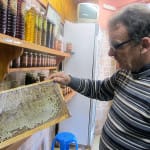 September 27, 2023 Building Blocks
September 27, 2023 Building Blocks
Editor's note: Our recurring feature, Building Blocks, focuses on foods and ingredients […] Posted in Athens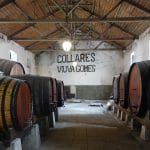 September 14, 2018 CB on the Road
September 14, 2018 CB on the Road
They withstood the phylloxera and the strong Atlantic winds, and are slowly fighting […] Posted in Lisbon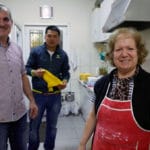 March 6, 2017 Ben-u Sen
March 6, 2017 Ben-u Sen
Istanbul's Kurtuluş neighborhood is home to a number of slow-burners, establishments […] Posted in Istanbul
Lauren RothmanLauren Rothman
Published on November 10, 2023
Related stories
September 27, 2023
AthensEditor's note: Our recurring feature, Building Blocks, focuses on foods and ingredients that are fundamental to the cuisines we write about. This may come as a surprise, but little Greece is Europe’s fourth most important honey producer after Spain, Germany and Hungary. Every year, between 12,000 and 17,000 tons of this liquid gold are stolen…
September 14, 2018
LisbonThey withstood the phylloxera and the strong Atlantic winds, and are slowly fighting back against urban expansion, so it’s no surprise that a glass of wine made from grapes grown in Colares tastes like no other. The smallest wine region in Portugal, Colares is also probably one of its most distinct. Located on the coastline…
Interested in exploring this neighborhood? Join our Shop, Cook, Feast activity to go deep in Kurtulus.
March 6, 2017
IstanbulIstanbul's Kurtuluş neighborhood is home to a number of slow-burners, establishments that may be hidden in plain view due to their plainness but that end up becoming some of our favorites. Gimmicks don’t fly in down-to-earth Kurtuluş, where neighborly ties are strong and home-cooked meals are preferred. Tucked on a side street in the middle…







































